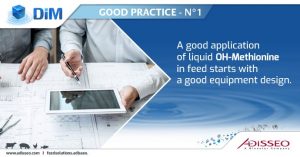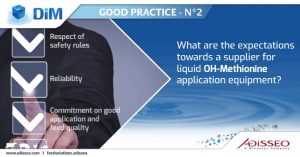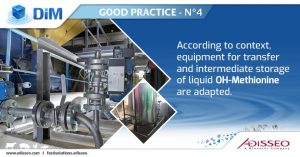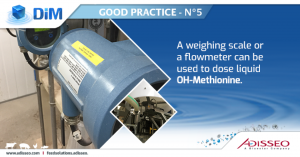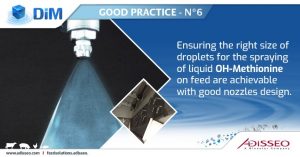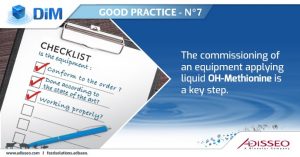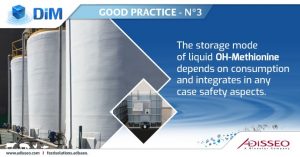
Guidelines for Unloading and Storage of liquid OH-Methionine in the feed mill
The choice on the storage type mainly depends on the consumption (tons per month) and local logistic conditions of liquid OH-Methionine. This product can be delivered in 1 m3 IBC (1,200 kg). IBCs can be used as such or transferred for intermediate bulk storage. For higher consumption, the product would be directly delivered in bulk.
In this case, the inlet should be well labelled and locked, mechanically and/or with automated valve.
A panel with safety labels will warn the drivers and plant staff. The installation of a safety shower is recommended.
If locally the trucks are not equipped with a pump, an unloading pump must be present at the plant.
It should be placed below the product outlet to facilitate the transfer. Its capacity should be oversized to consider the product viscosity, about 60 to 100 m3/h.
One or more bulk tanks will be installed, generally close to other liquid ones.
This is to benefit from the existing retention pool (refer to local regulation in term of environment).
The minimum storage capacity is calculated by summing the minimum stock and the quantity of one delivery, basically at least 30-35 m3.
The tank will include: a top and near bottom for service and inspection, a manhole for inspection, vent pipe, levels (mechanical, electronic).
Outside, it will be equipped with a caged ladder and fence for safe inspection and maintenance operations.
Conception and construction of the storage should avoid external contamination of the product (with dust, rain…). For extreme cold regions, avoid exposure to dominant winds if possible.
Heating of the main storage is not needed in general, but insulation may be recommended in cold regions.
The discharge point must be located on the bottom, not on the side, to avoid having a dead zone and retention of product.
|
